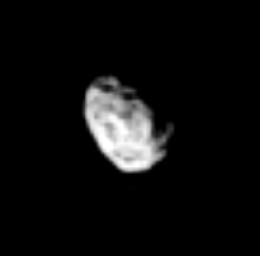LPSC Notes Part 4
- Channels and Fan-like features Conclusions
- SAR-bright channels, associated fan-like features, and flows suggest the presence of transported material w/ different radar properties than the surrounding materials
- while surface roughness drives much of the reflected signal from terrestrial surfaces, Titan's observed volume backscattering implies that near-surface structure or compositional change could, to some extent, define surface features
- Two possible explainations based on SAR and Radiometry data at these features
- SAR-bright return is associated w/ a high component of volume backscattering possibly due to presence of low absorbing porous material (a mixture of low and high dielectic constant)
- SAR-bright return results from a high component of volume backscattering derived from fluvially-transported and deposited hetereogenous materials (ice-rocks) of a size greater than the operational radar wavelength of 2.17 cm; here the SAR-bright linear features might be associated w/ fluvial (most likely hydrocarbon) channels and the fan-like features then be alluvial in nature
- Impact craters from RADAR
- crater identification hampered by volume scattering and other round features like calderas
- 80-km wide crater in T3 swath
- impact crater?
- dark ejecta blanket - 150 km - impact melt?
- parabolic bright deposit 260 km+
- sharp rim crest
- gullies on wall
- flat floor, no central peak
- two tone floor - aeolian?
- strongly modified crater interior, but...
- small scale features preserved outside crater in ejecta blanket - relatively young
- relation to dark linear features in dark terrain?
- nearby round features - old craters?
- 440-km multi-ring basin
- moat - crater lake?
- wind streaks or wavecrests near south east rim
- downslope fluvial features along eastern and south eastern rim
- gullies in rim
- hummocky central region
I guess that's it for these. I might post more next week. For now, I think that's enough ;)









